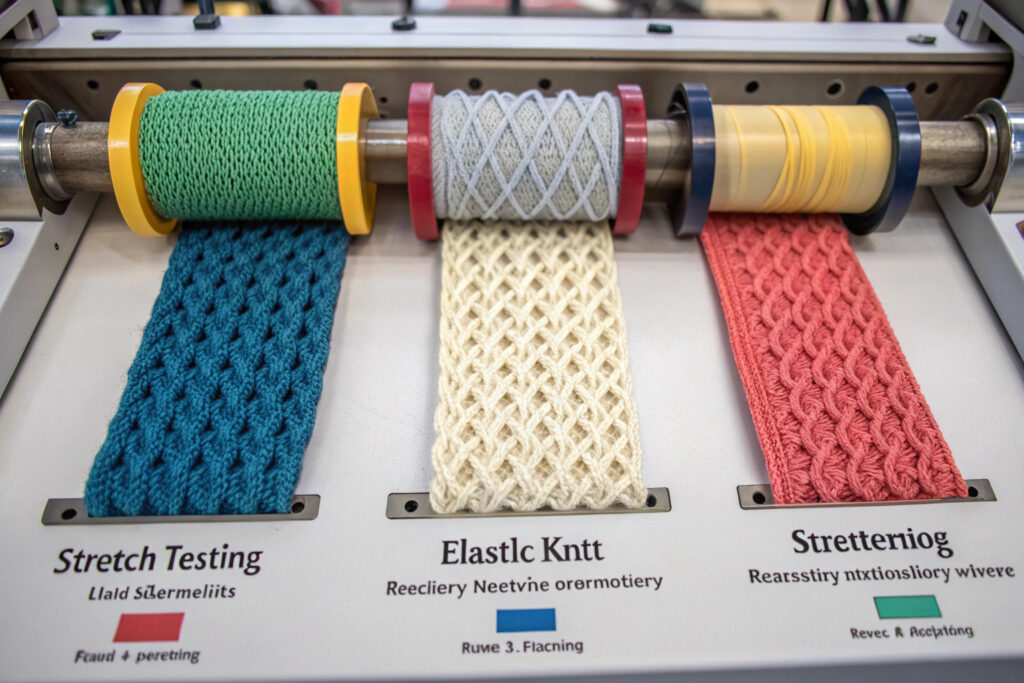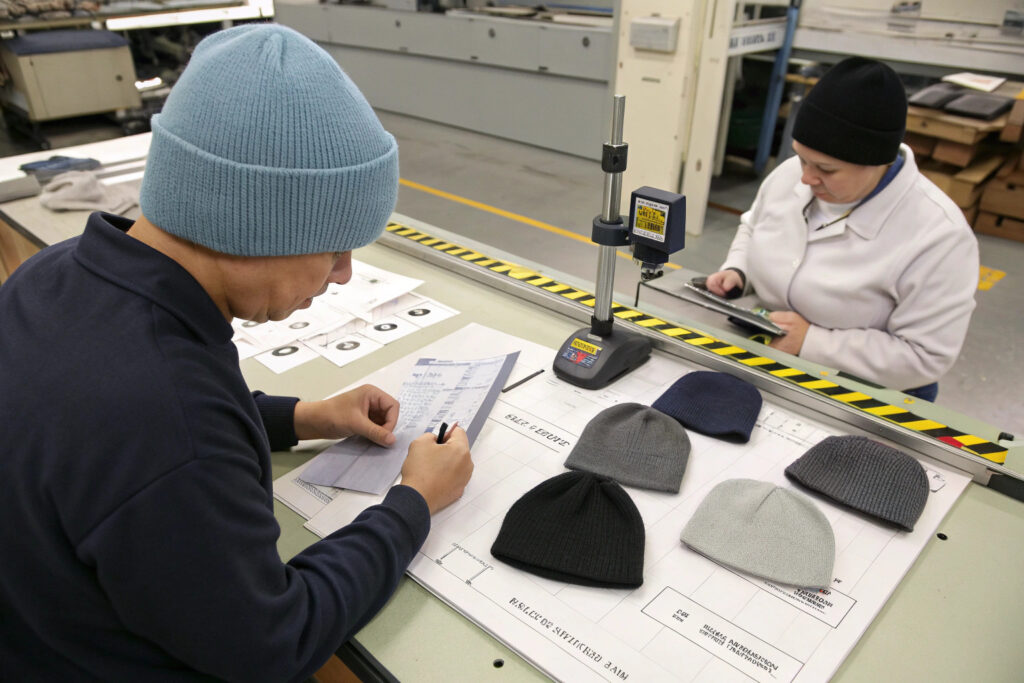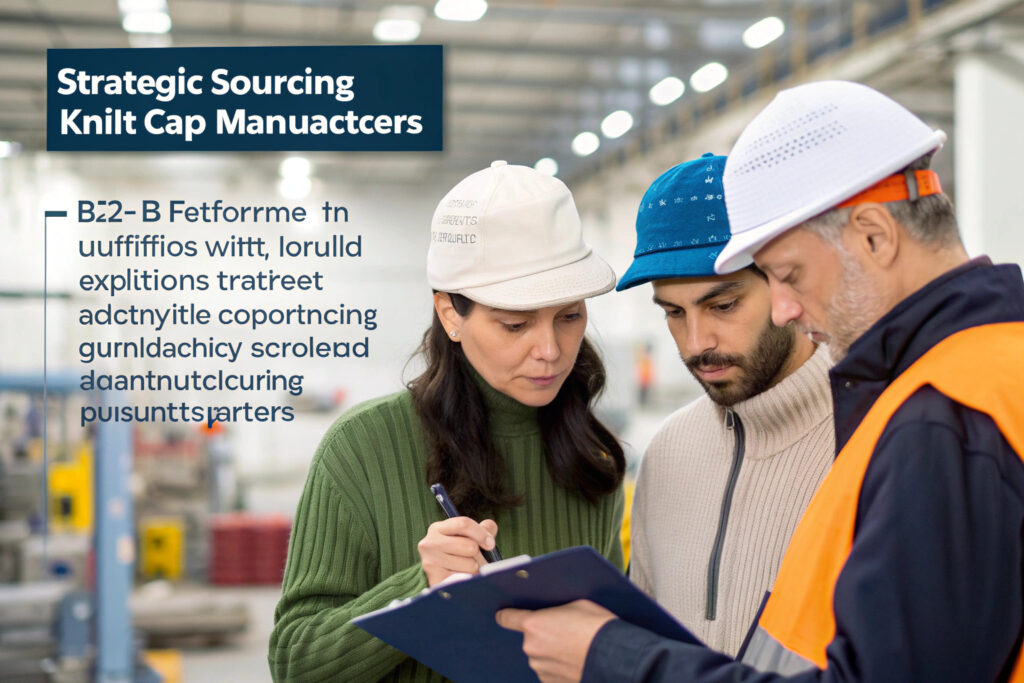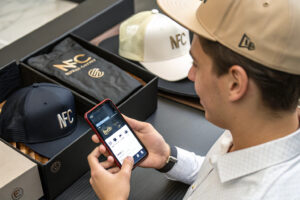Finding the right elastic knit caps that combine comfort, durability, and perfect fit can be challenging for buyers. The secret lies in understanding fabric properties, manufacturing techniques, and quality control measures that ensure consistent sizing and comfortable elasticity across all head sizes.
The key to sourcing elastic knit caps with perfect fit involves selecting the right stretch fabrics, understanding knitting techniques, implementing precise sizing standards, and working with manufacturers who specialize in stretch headwear production.
Mastering these sourcing elements will help you provide customers with knit caps that maintain their shape, offer comfortable compression, and fit perfectly across diverse head sizes and shapes.
What Fabric Properties Ensure Optimal Stretch and Recovery?
The foundation of perfect-fitting elastic knit caps lies in fabric composition and construction. Understanding these properties helps you select materials that provide both immediate comfort and long-term durability.
Optimal stretch and recovery come from specific fiber blends, knitting structures, and finishing treatments that work together to maintain shape while accommodating various head sizes comfortably.

Which Fiber Blends Deliver the Best Elasticity?
Fiber selection directly impacts a knit cap's stretch characteristics, recovery ability, and overall comfort. Different blends offer varying degrees of elasticity suited to specific market needs and price points.
Premium elastic knit caps typically use acrylic-spandex blends (92-95% acrylic, 5-8% spandex) for excellent stretch recovery and softness. For warmer options, wool-nylon-spandex combinations (80% wool, 15% nylon, 5% spandex) provide natural insulation with enhanced durability. Our manufacturers achieve optimal performance using high-twist yarns that improve elasticity and prevent sagging. The spandex content (also known as Lycra® or elastane) should range from 5-12% depending on the desired compression level. For eco-conscious markets, recycled polyester-spandex blends offer sustainable elasticity with 30-40% better shape retention than conventional materials.
How Does Knitting Structure Affect Fit Consistency?
The knitting construction determines how fabric stretches and recovers, directly impacting fit consistency across production batches. Different stitch patterns create varying stretch characteristics and visual textures.
Rib knit structures (1x1, 2x2 rib) provide excellent vertical stretch ideal for comfortable head-hugging fit. Our manufacturers use circular knitting machines with precise stitch density control to ensure consistent elasticity. The course count (horizontal rows per inch) and wale count (vertical rows per inch) must be carefully calibrated - typically 12-16 courses and 9-12 wales per inch for optimal stretch. Advanced jacquard knitting techniques allow pattern integration without compromising elasticity. Manufacturers should maintain tension consistency within ±2% to prevent size variations between production runs.
What Manufacturing Techniques Guarantee Size Accuracy?
Consistent sizing requires precise manufacturing controls from pattern development through final production. Even the best materials cannot compensate for poor manufacturing techniques that lead to size variations.
Accurate sizing depends on comprehensive pattern engineering, strict production controls, and rigorous quality assurance protocols throughout the manufacturing process.

How Important is Pattern Engineering for Fit?
Pattern engineering forms the blueprint for perfect fit, translating head measurements into three-dimensional cap structures that accommodate movement while maintaining shape.
Professional pattern makers use graded size charts based on anthropometric data to create patterns that scale proportionally across sizes. Our manufacturers develop patterns specifically for stretch fabrics, accounting for 15-25% negative ease (the difference between body measurement and garment measurement). The crown shaping must distribute stretch evenly to prevent tight spots or loose areas. Advanced manufacturers use CAD systems to simulate how patterns will perform when knitted with specific elastic materials. Proper seam engineering ensures flat, comfortable joins that don't restrict elasticity or create pressure points.
What Production Controls Maintain Size Consistency?
Production controls ensure that every cap matches the intended specifications, preventing the size variations that commonly plague knit cap manufacturing.
Critical controls include yarn tension monitoring systems that maintain consistent feed rates, preventing tight or loose knitting. Our manufacturers implement real-time stitch counting technology that automatically adjusts for any deviations. The finishing processes - particularly steam setting - must be carefully controlled to stabilize elasticity without over-relaxing the fabric. We specify head form standards for final inspection, with caps tried on forms representing the 5th to 95th percentile head sizes. Production batches undergo statistical process control with sample sizes of 10% to catch any drift from specifications.
How to Verify Quality and Performance Before Ordering?
Thorough pre-production verification prevents costly mistakes and ensures the caps you receive match your quality expectations. Multiple verification methods provide confidence in manufacturer capabilities.
Quality verification combines sample evaluation, testing protocols, and manufacturer assessments to confirm both initial quality and long-term performance.

What Pre-Production Samples Reveal About Fit Quality?
Pre-production samples provide the first indication of how caps will perform in real-world conditions. Comprehensive sample evaluation identifies potential issues before mass production begins.
Request full size run samples to verify grading accuracy across your entire range. Our evaluation process includes wear testing on multiple head sizes and shapes to assess comfort and fit distribution. Check for differential stretch - the cap should stretch easily to accommodate larger heads while maintaining gentle compression on smaller heads. Evaluate recovery time after stretching; quality caps should return to original size within 30 seconds. The cuff elasticity should provide secure fit without creating pressure lines on the forehead. Samples should be washed and dried 3-5 times to verify dimensional stability and maintained elasticity.
Which Performance Tests Ensure Long-Term Durability?
Performance testing simulates years of use in a short timeframe, revealing how caps will maintain their fit and appearance through repeated wear and cleaning.
Essential tests include stretch recovery testing after multiple stretch cycles to verify the fabric returns to within 5% of original dimensions. Accelerated washing tests determine if caps will shrink or lose elasticity - quality caps should maintain fit within 3% dimensional change after 10 washes. Seam strength testing ensures stitches withstand stretching without breaking or distorting. For colored caps, colorfastness to perspiration and rubbing prevent dye transfer during wear. Our manufacturers provide test reports from accredited laboratories verifying compliance with international standards.
What Sourcing Strategies Identify Quality Manufacturers?
Finding manufacturers who consistently deliver perfectly-fitting elastic knit caps requires strategic sourcing approaches that go beyond basic supplier directories.
Effective sourcing combines multiple channels with rigorous verification processes to identify partners with the technical expertise and quality systems needed for stretch knit production.

How to Evaluate Manufacturer Technical Capabilities?
Technical capability assessment determines whether a manufacturer has the equipment, expertise, and systems to produce elastic knit caps with consistent fit and quality.
Review their knitting machine specifications - modern electronic machines with individual needle selection provide better control over elastic sections. Inquire about quality control systems for monitoring yarn evenness and fabric weight consistency. Assess their pattern development capabilities - quality manufacturers should create custom patterns rather than using generic templates. Verify they conduct in-process inspections at multiple stages: yarn receiving, knitting, sewing, and finishing. Our factory audits include production capability studies that measure their ability to maintain size consistency across large production runs.
What Questions Reveal Manufacturing Expertise?
Strategic questioning during manufacturer evaluations reveals their depth of knowledge about elastic knit cap production and their commitment to quality.
Ask about their experience with different elastic fiber percentages and how they adjust knitting parameters for various blends. Inquire how they prevent common issues like fabric curling at edges and seam puckering. Question their approach to size grading for stretch versus non-stretch caps. Ask to see their quality control documentation and test reports from previous orders. Inquire about their production capacity for elastic versus regular knit caps - specialized manufacturers typically allocate separate production lines. Their answers should demonstrate technical understanding rather than generic sales responses.
Conclusion
Sourcing elastic knit caps with perfect fit requires comprehensive understanding of materials, manufacturing techniques, quality verification, and strategic partner selection. The most successful sourcing approaches combine technical knowledge with rigorous evaluation processes to identify manufacturers capable of delivering consistent, comfortable fit across all production.
By focusing on these key areas and implementing thorough verification protocols, you can establish reliable supply chains for elastic knit caps that meet customer expectations for comfort, durability, and perfect fit.
Ready to source elastic knit caps with guaranteed perfect fit? Contact our Business Director Elaine today to discuss your specific requirements and access our network of specialized stretch knit manufacturers. Her email is elaine@fumaoclothing.com. Let's create knit caps that combine superior comfort with consistent, reliable fit.







